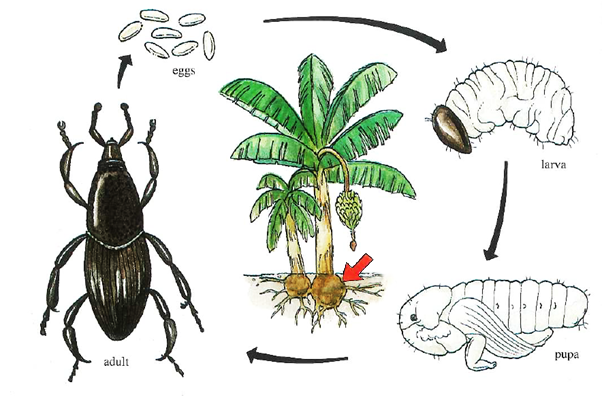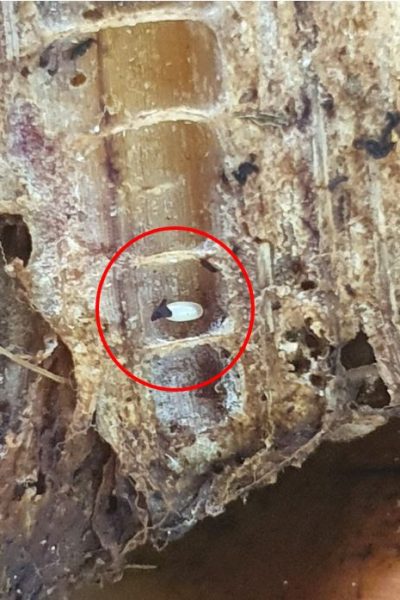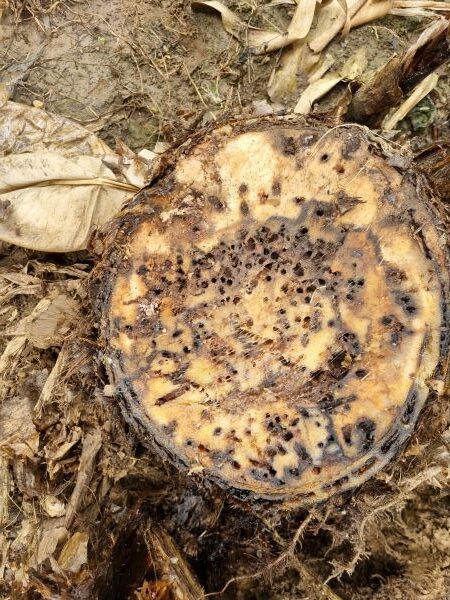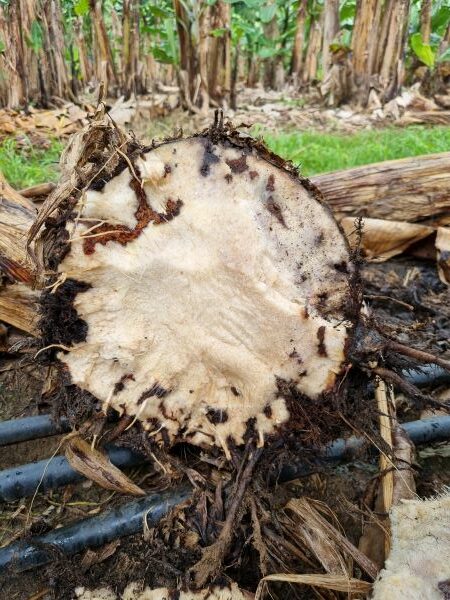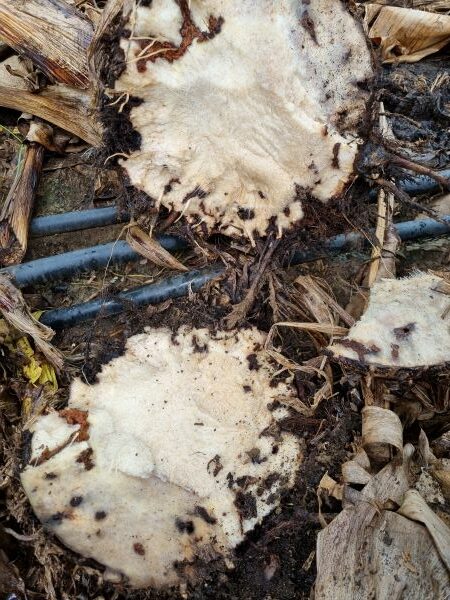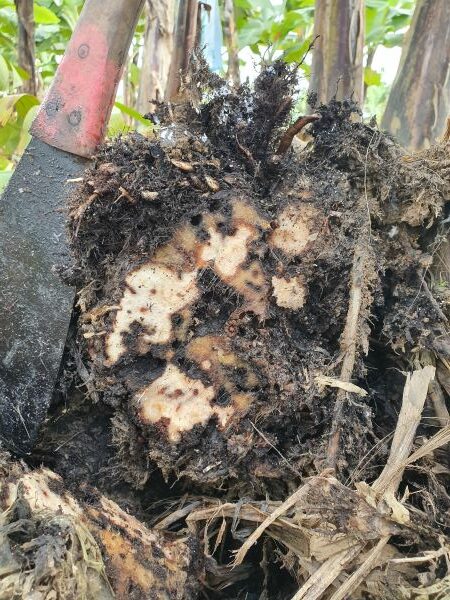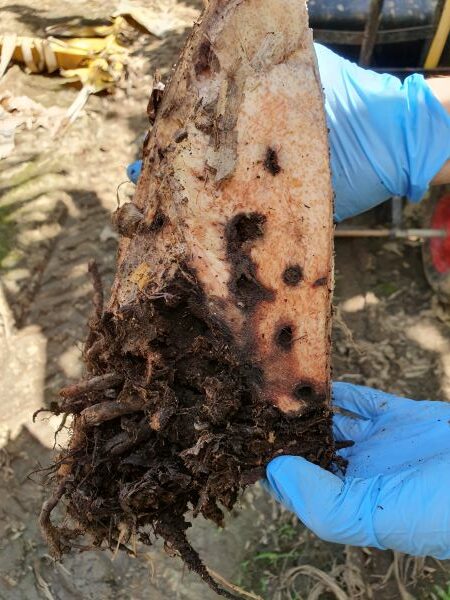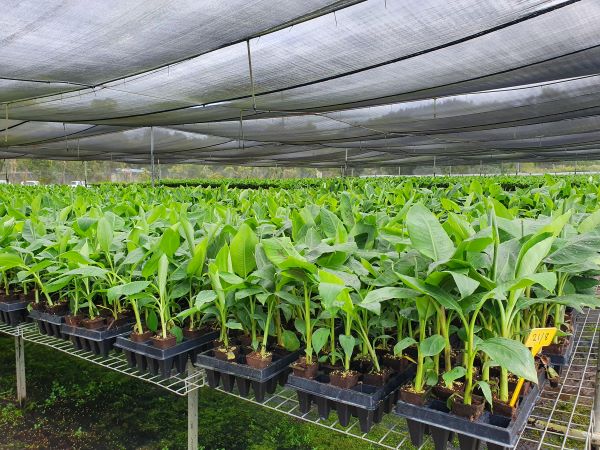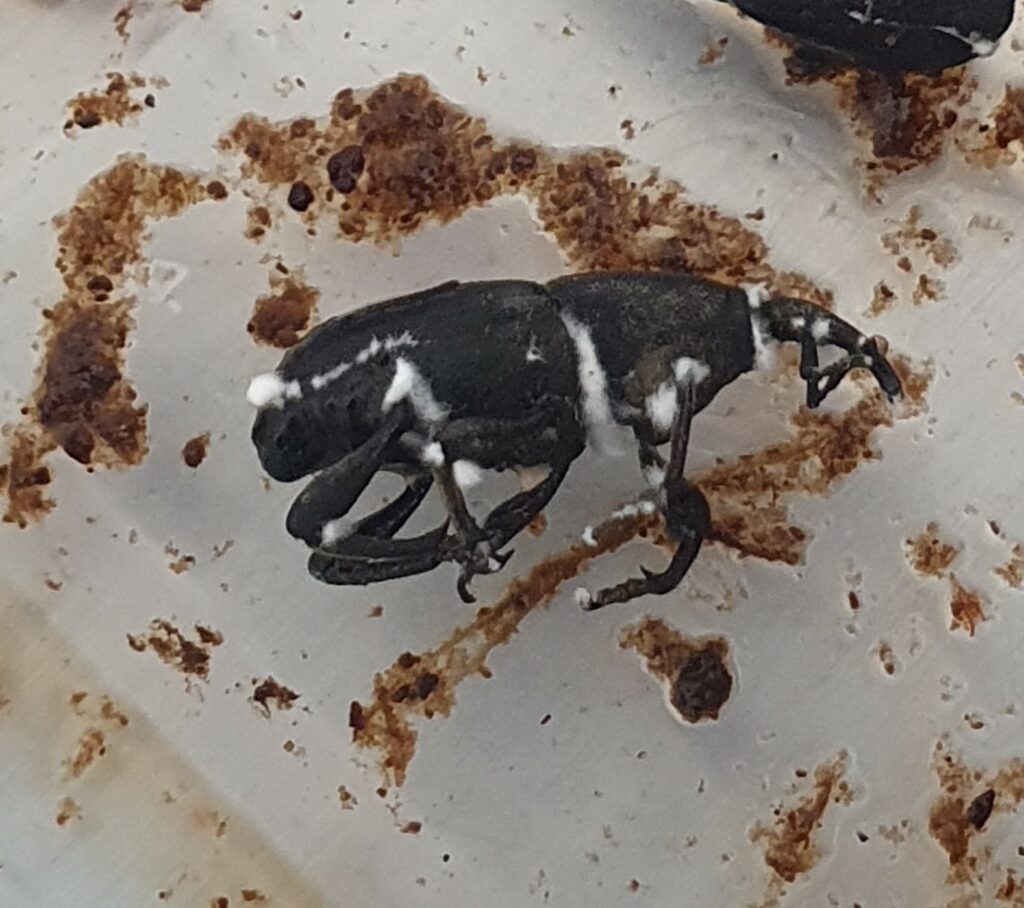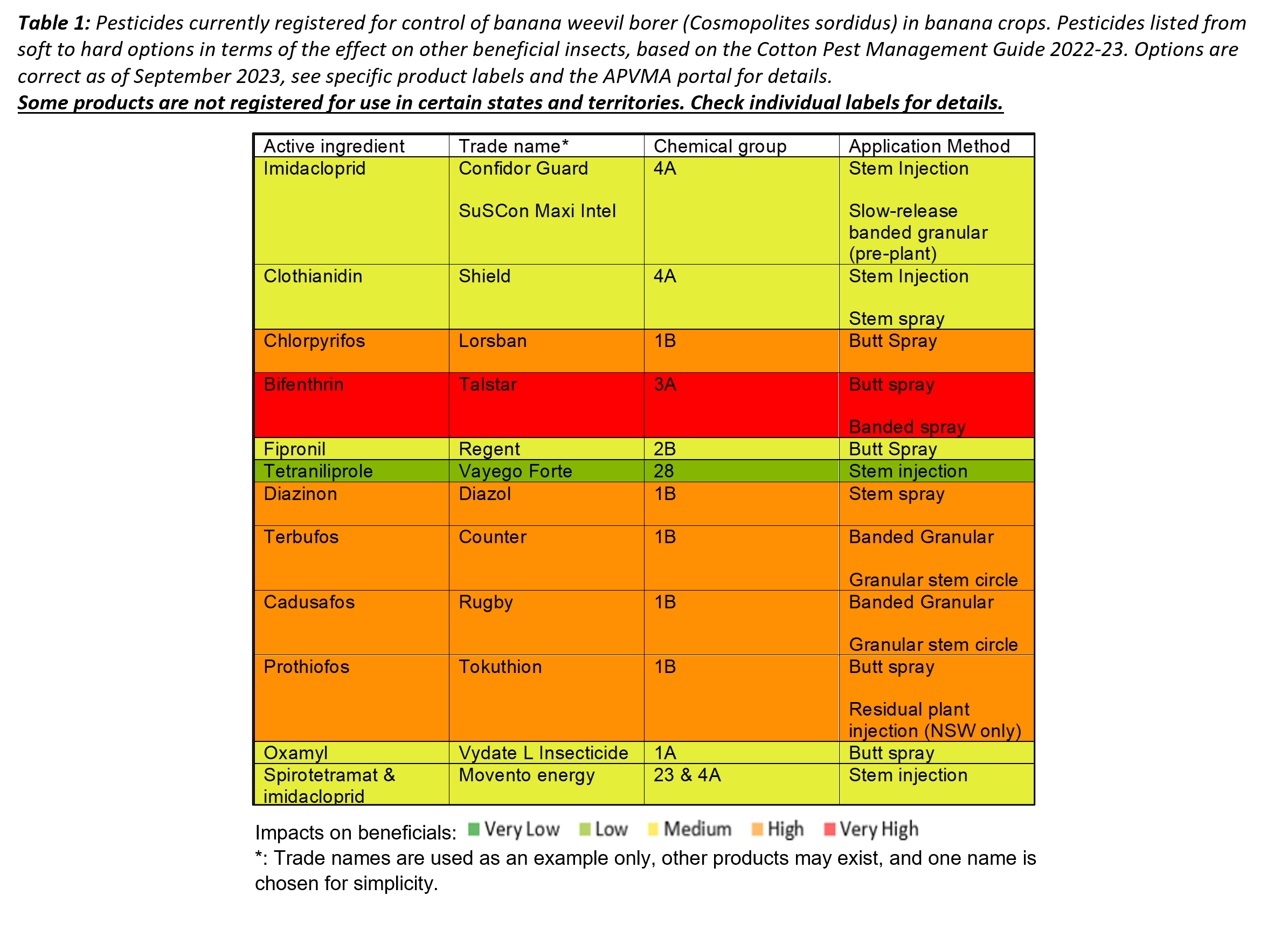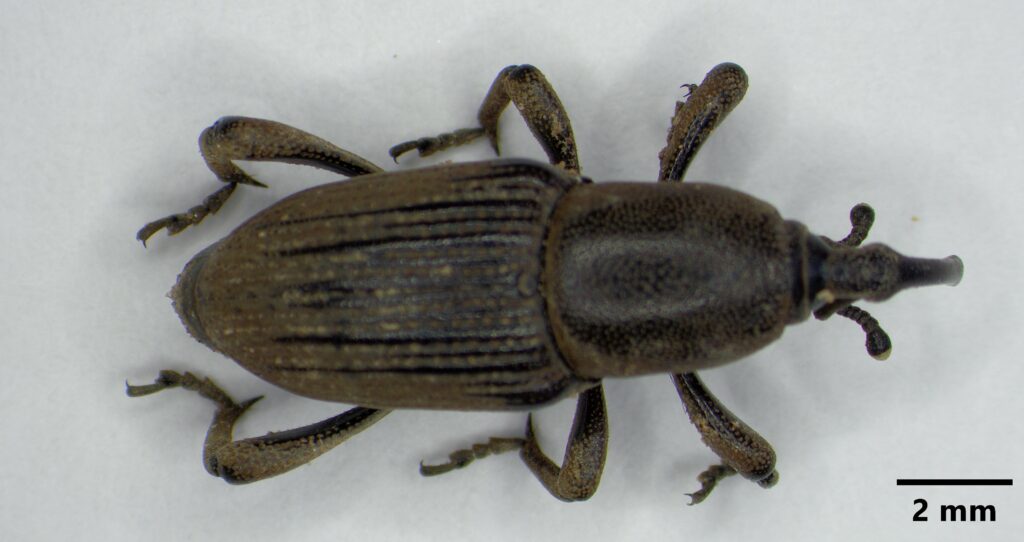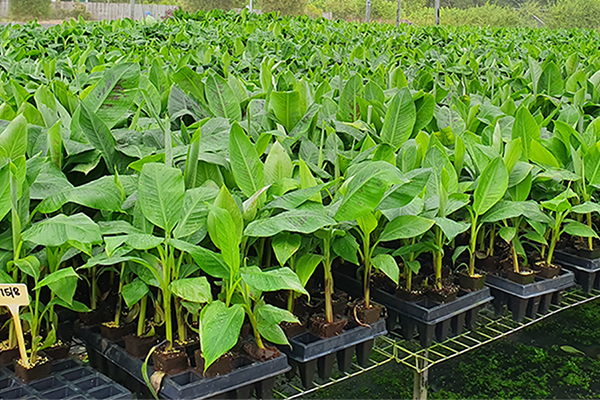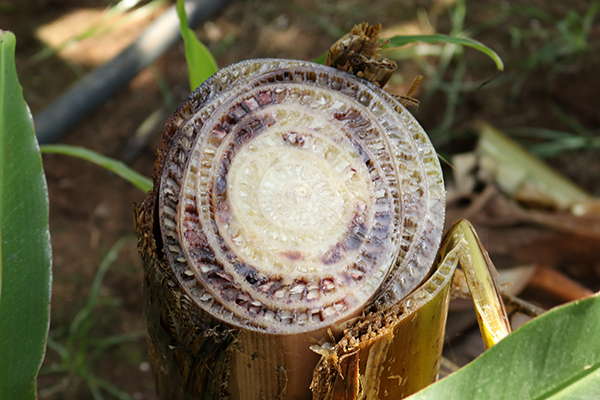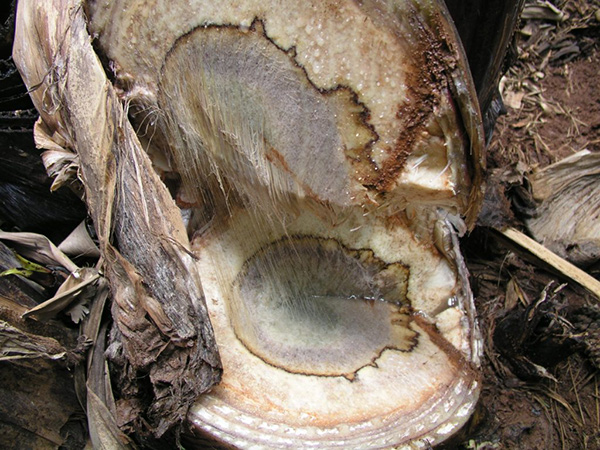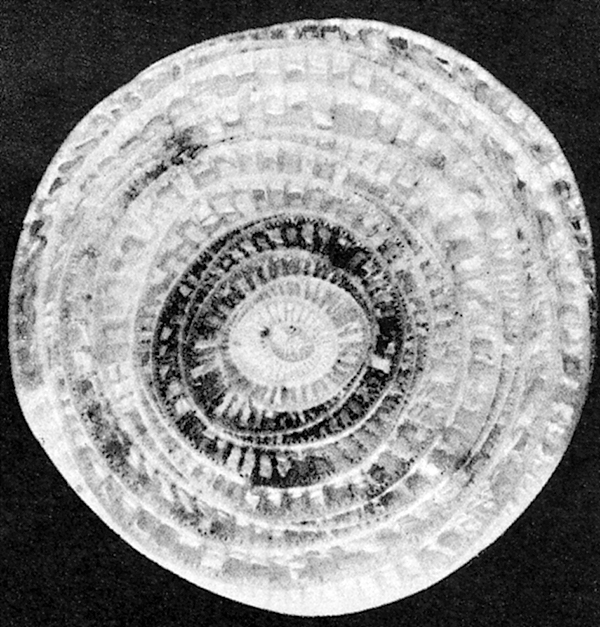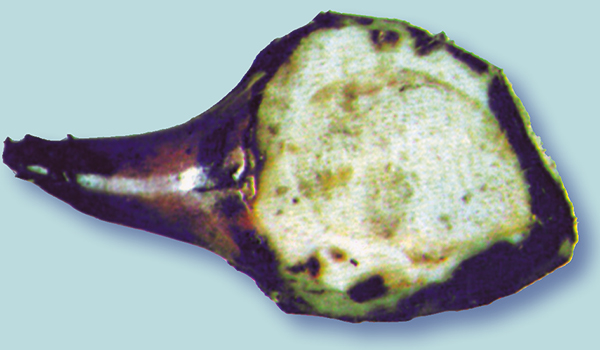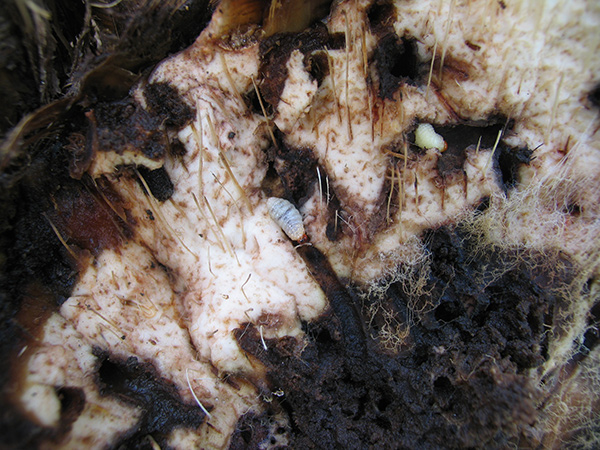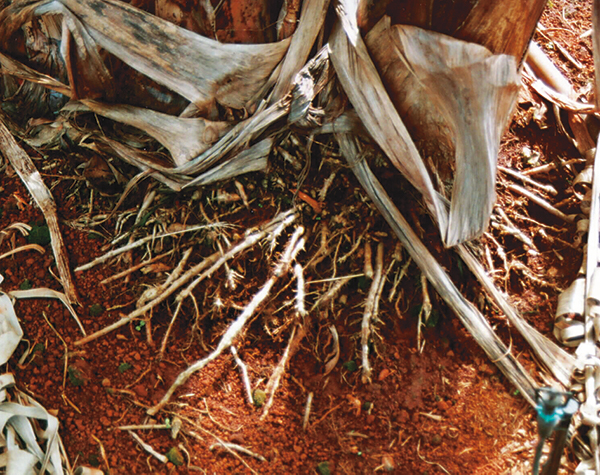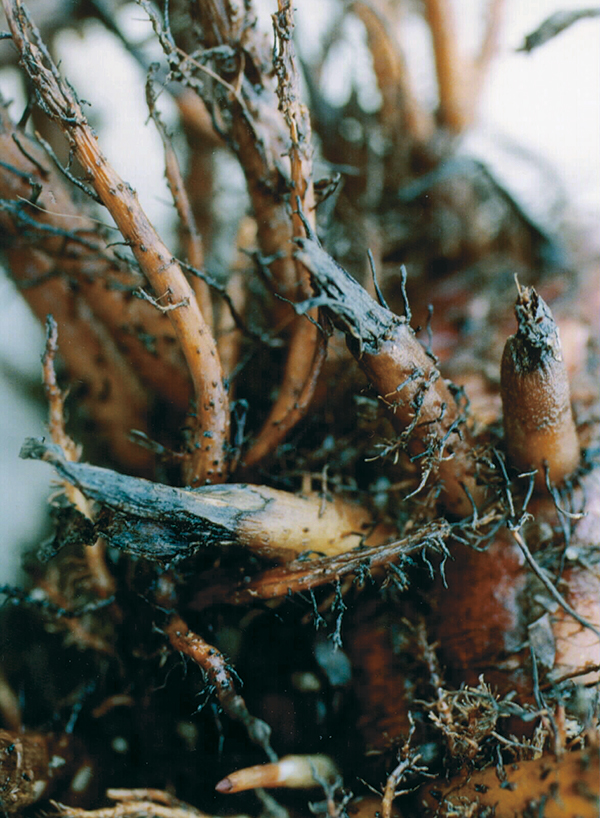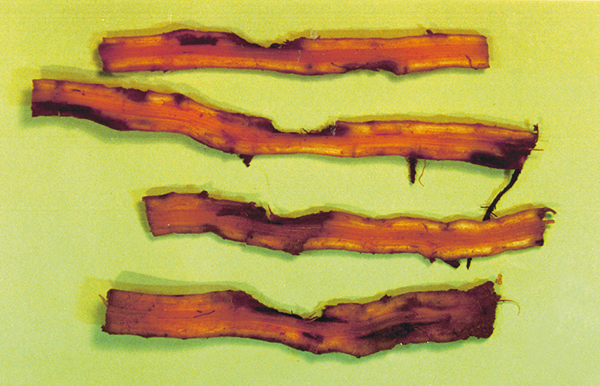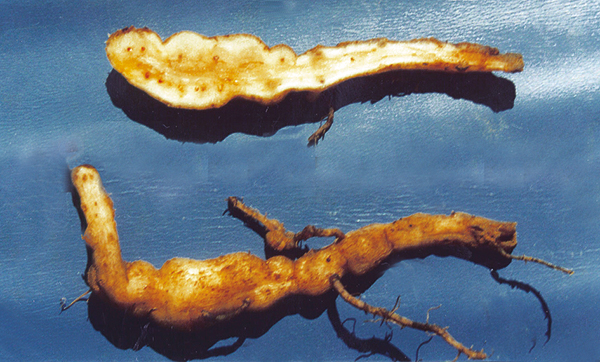Banana weevil borer Cosmopolites sordidus
Monitoring
Adult banana weevil borer activity increases during warm and/or wet weather and decreases during cold and/or dry conditions. Periods of greatest adult activity are in spring (September-October) and autumn (March-April). If blocks are suspected of infestation, trapping should concentrate on these times to determine whether chemical treatments are needed or not. In addition, it is advisable to set traps prior to a new planting or during the fallow period. This is to ensure that any banana plant material has decomposed entirely, eliminating the possibility of any remaining adult banana weevil borers being present in residues that might affect the new crop.
If infestations are suspected adult banana weevil borer monitoring should be carried out every month, except during the colder months when the time frame can be extended to six weeks. Banana weevil borer numbers at baits placed during adverse conditions may not accurately reflect actual adult population levels, as it has been shown that only 5-15% of the actual population will appear on baits under these conditions.
There are a few main methods of monitoring banana weevil borers, which are outlined below:
Bait trapping
Adult banana weevil borer numbers can be monitored by baiting (trapping). Baits are made by cutting a fresh pseudostem into slices about 10cm thick . The pseudostem material selected for making baits should ideally be taken from the lower portion of the stem of freshly harvested plants. One bait is placed close to the base of each plant, with one cut surface in full contact with the ground, and covered with leaves to prevent the bait from drying out. Twenty or more baits should be used in known hot spots to obtain a good indication of banana weevil borer numbers. The ground directly beneath the bait should be cleared of any weeds or plant material that can shelter adult banana weevil borers and hinder rapid checking of the baits. After three to four days, the baits are turned over and the adult banana weevil borers are counted (Hint! Look for banana weevil borers on the ground where the bait was resting as well as the base of the bait in contact with the ground).
Adult banana weevil borer numbers are recorded from each bait and, knowing the total number of baits set and banana weevil borers counted, the average number of adults per bait can be calculated by dividing the total number of banana weevil borers by the number of baits set.

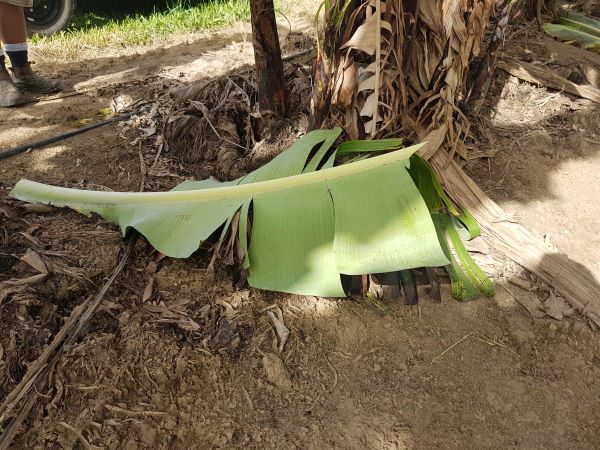
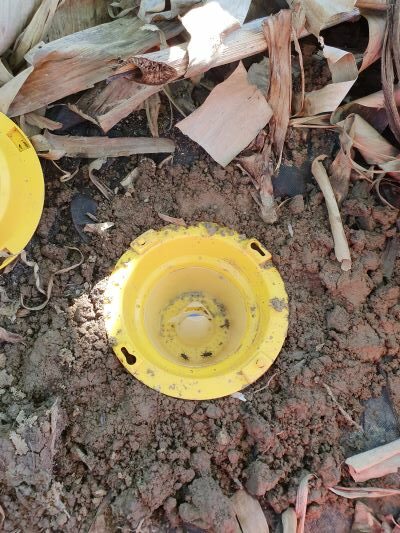
Pheromone trapping
Another option for monitoring is the use of pheromone-baited traps, which contain a substance (sordidin) that specifically attracts adult banana weevil borers. These baits attract both male and female banana weevil borers and can attract individuals up to 20m away from the trap, however, this efficiency is reduced by rainfall. Baits need to be replaced every 30 days, as lures run out (depending on lure concentration – read labels for specifics). Different types of traps are commercially available for growers.
Corn damage assessment
Larval damage can be assessed by rating the percentage of tunnelling in the corm of harvested plants.
The larger the area affected the higher the pressure of banana weevil borers. This monitoring is destructive and requires the cutting of plants, and is more encouraged as a monitoring tool to see how known infestations are responding to treatment, rather than a diagnosis of infestations.
For more information contact:
The Better Bananas team
Department of Agriculture and Fisheries
South Johnstone
07 4220 4177 or email betterbananas@daf.qld.gov.au
This information is adapted from: Pinese, B., Piper. R 1994, Bananas insect and mite management, Department of Primary Industries, Queensland and Treverrow, N., Pearley D., and Ireland, G 1992 Banana weevil borer : a pest management handbook for banana growers. : NSW Agriculture, North Coast Region; NSW Banana Industry Committee; Horticultural Research & Development Corporation.
This information has been updated as part of the National Banana Development and Extension Program (BA19004) which is funded by Hort Innovation, using the banana industry research and development levies and contributions from the Australian Government. Hort Innovation is the grower-owned, not-for-profit research and development corporation for Australian horticulture. The Queensland Government has also co-funded the project through the Department of Agriculture and Fisheries.



